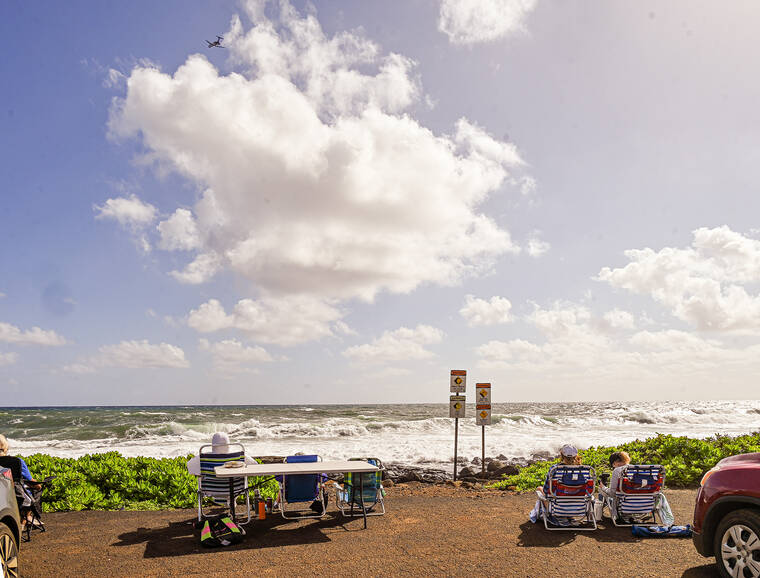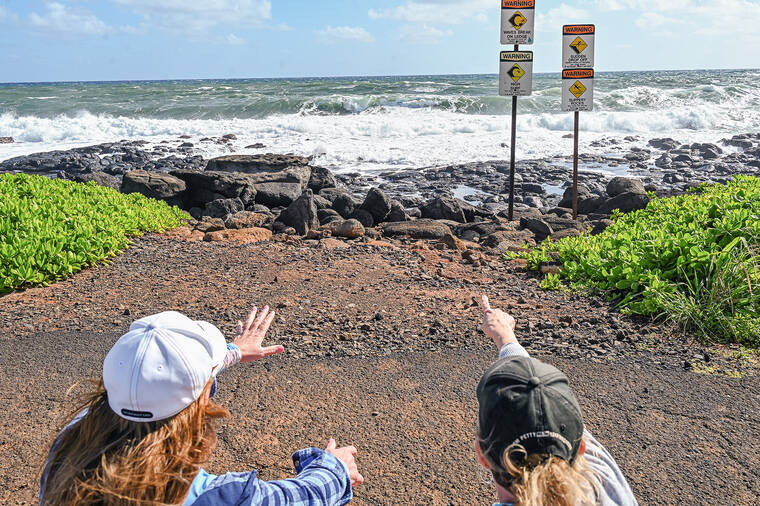LIHU‘E — Approximately 345 volunteers collected data from the shores of Kaua‘i, O‘ahu and Hawai‘i Island on Saturday during the Hawaiian Islands Humpback Whale National Marine Sanctuary Ocean Count, which coincided with the Great Whale Count by the Pacific Whale Foundation on Maui.
The count was the second of three coordinated whale counts between the two organizations in 2023, and the first year since March 2020 that both programs resumed normal operations. The count takes place three times during peak whale season annually, on the last Saturdays in January, February and March.
Volunteers collected data from 42 sites across the main Hawaiian Islands, including a dozen sites on Kaua‘i, with a total of 147 whales observed during the 8:30 to 8:45 a.m. time period, the most of any time period throughout the day’s count that started at 8 a.m. and ran until 12:15 p.m.
On the islands of Kaua‘i, O‘ahu and Hawai‘i Island, Ocean Count volunteers collected data from 30 sites with a total of 77 whales observed during the 8:30 to 8:45 a.m. time period.
Across the main Hawaiian Islands, weather conditions varied, with sunny, blue skies or cloudy conditions. The majority of sites were impacted by strong winds and moderate swells that made it difficult to observe whales from shore.
Viewing conditions on Kaua‘i, where 64 whales were observed, were hampered by strong winds.
“We’re warriors,” said Carol Everett, a site leader at Ahukini.
Jean Souza, the Hawaiian Islands Humpback Whale National Marine Sanctuary program specialist, reported one site, the Ninini Point Lighthouse, was closed before the count start time because the team leader reported “radical” conditions of not just wind, but being hit by wave splash.
Marga Goosen, another of the site leaders at Ahukini, said several teams of counters left early because of the weather.
On O‘ahu, the total number of whales observed was 232, and Hawai‘i Island reported 105 whales observed.
The total number for the Great Whale Count on Maui was 596 for a grand total of 997 observations throughout the state. This number may represent duplicate sightings of the same whale by different observers, or at different time periods, or different locations throughout the day.
A variety of other species were also spotted during the count. That included a ‘ilioholoikauaua, or Hawaiian monk seal, honu, or green sea turtles, nai‘a, or spinner dolphins, and multiple seabird species, such as ‘iwa, or the great frigatebird, moli, or Laysan albatross, kolea, or Pacific golden plover, manu o ku, or white tern, ‘a, or red-footed booby, koa‘e ula, or red-tailed tropic bird, and more.
Data collected during the Sanctuary Ocean Count and Great Whale Count, combined with other research efforts, can help reveal trends in humpback whale occurrence within and among whale seasons.
The final Ocean Count for 2023 is scheduled to take place on March 25.
•••
Dennis Fujimoto, staff writer and photographer, can be reached at 808-245-0453 or dfujimoto@thegardenisland.com.







